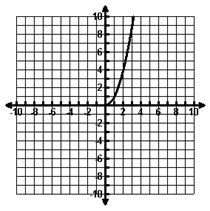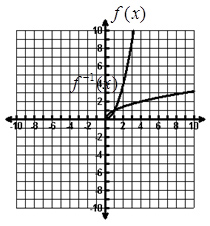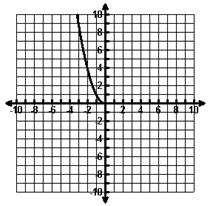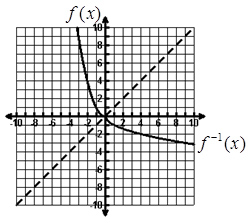
The first thing to consider when determining the inverse function of a given function is the domain and range of the given function. The domain of the given function is restricted if the function is not one-to-one. For example, given the function f(x) = x2, if the domain is restricted to the set of numbers greater than or equal to 0, then the function is a one-to-one function. See the graph below.

The domain of the function is {x | x ≥ 0}.
The range of the function is {y | y ≥ 0}.
When finding the inverse function of the quadratic function, use the principal square root since the domain is restricted to numbers greater than or equal to 0 (positive numbers plus 0).
f (x) = x2
y = x2
x = y2
y2 = x
√y2 = √x
y = √x
f –1 (x) = √x
The graph of f (x) and f-1 (x) are shown below.

The domain of the inverse function is {x | x ≥ 0}.
The range of the inverse function is {y | y ≥ 0}.
The domain of f (x) is the same as the range of f –1 (x) and vice versa.
If the domain was restricted to numbers less than or equal to 0, then the negative square root should be used.

The domain of the function is {x | x ≤ 0}.
The range of the function is {y | y ≥ 0}.
f (x) = x2
y = x2
x = y2
y2 = x
√y2 = √x
y = – √x
f –1 (x) = – √x
The negative root is used since the domain of the original function is restricted to negative numbers and 0; therefore, the range of the inverse is restricted to negative numbers and 0.
The graphs of f (x) and f –1 (x) are shown below.

The domain of the inverse function is {x | x ≥ 0}.
The range of the inverse function is {y | y ≤ 0}.
The domain of f (x) is the same as the range of f –1 (x) and vice versa.